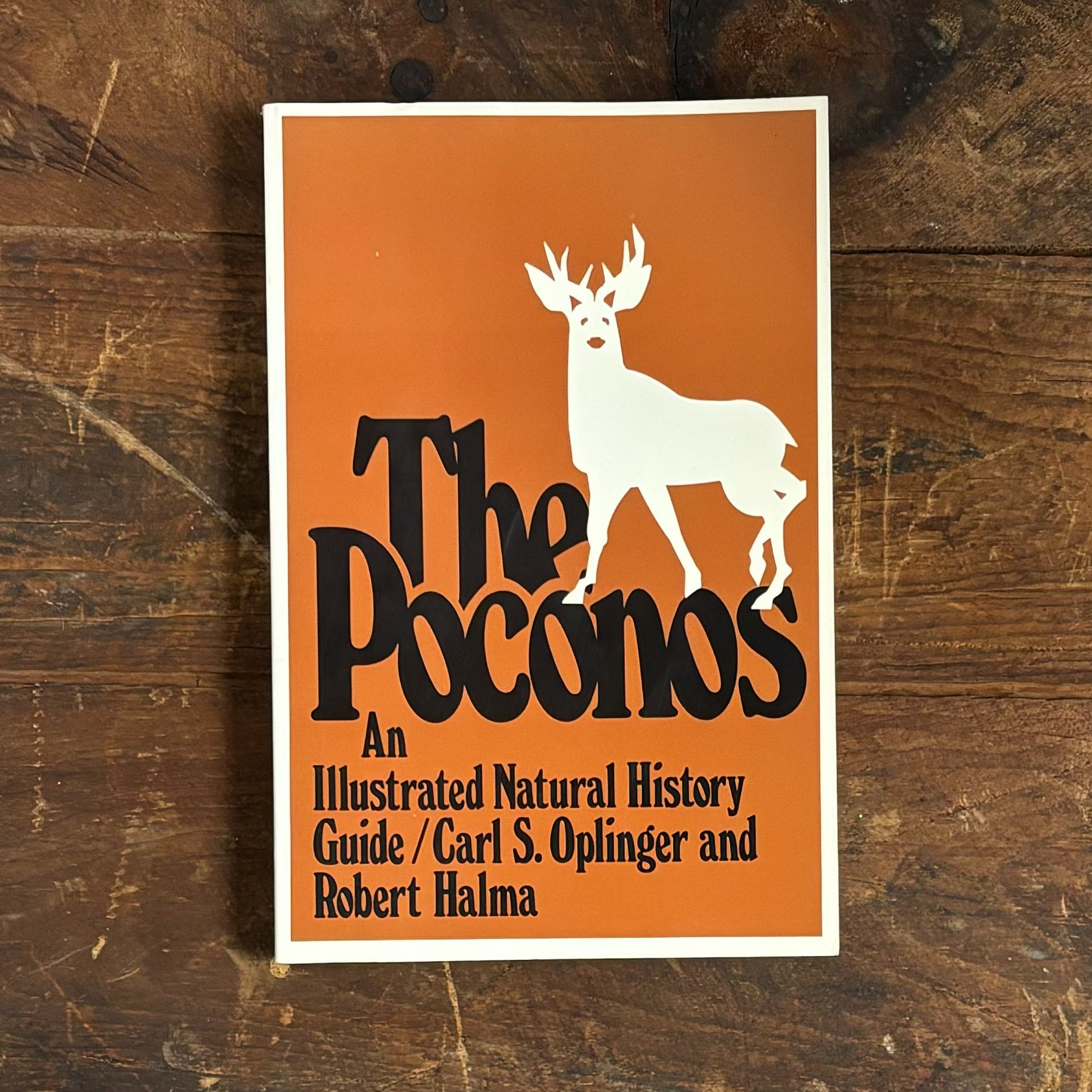 Image 1 of 1
Image 1 of 1


The Poconos: An Illustrated Natural History Guide
Authors Carl S. Oplinger and Robert Halma
Second paperback printing, 1990
Used book, very good condition
"Opens our eyes to the wonder of the Poconos . . . explores in depth the myriad facets of the regions." —New York Times
"The comprehensive natural history information contained in this book will be extremely helpful to anyone living in, or visiting, the Poconos and becoming interested in the wildlife, plants, and geology of the region."—Wildlife Book Review
The Poconos, a rich plateau nestled in northeastern Pennsylvania between the Delaware River and the Moosic Mountains, encompass a variety of alluring features—forests and lakes, abundant wildlife, ski slopes, waterfalls, and honeymoon resorts. This book is the first guide to the natural history and ecology of this region, less than two hours' drive from New York City, whose scenery attracts some ten million visitors each year.
Oplinger and Halma have written a complete guide to the Poconos for amateur naturalists, outdoor enthusiasts, tourists, and others who wish to explore this region. They clearly explain the Poconos' particular geographic formations, animal habits and habitats, climate, geology, and vegetation. The authors trace the region from its beginnings millions of years ago as a part of a shallow sea through the reshaping forces of great glaciers to today's roadways and turnpikes.
The introductory chapters provide a general survey of the area, including its history and places to be explored and observed. Subsequent chapters focus on forest types, wildlife, and aquatic habitats. For those who can only drive through the Poconos, the authors include a special section on plants and animals that can be seen along the roadside—as diverse and fascinating a group of creatures as those found in wilder places. A chapter on human activity details the environmental effects of people from the days of the Indians to the present. The final chapter of the guide is devoted to the Delaware Water Gap National Recreation Area, a region with marked trails, maps, and visitor centers.
Throughout the book, numerous boxes direct readers to observatory points for specific birds, ecosystems, vegetation types, and geological features. Maps, tables, and original pen-and-ink illustrations, and a select list of field guides and other references enhance the guide's appeal. The Poconos will be the indispensable companion for any visitor or resident who wants to understand the unique beauty and natural history of the Poconos.
Authors Carl S. Oplinger and Robert Halma
Second paperback printing, 1990
Used book, very good condition
"Opens our eyes to the wonder of the Poconos . . . explores in depth the myriad facets of the regions." —New York Times
"The comprehensive natural history information contained in this book will be extremely helpful to anyone living in, or visiting, the Poconos and becoming interested in the wildlife, plants, and geology of the region."—Wildlife Book Review
The Poconos, a rich plateau nestled in northeastern Pennsylvania between the Delaware River and the Moosic Mountains, encompass a variety of alluring features—forests and lakes, abundant wildlife, ski slopes, waterfalls, and honeymoon resorts. This book is the first guide to the natural history and ecology of this region, less than two hours' drive from New York City, whose scenery attracts some ten million visitors each year.
Oplinger and Halma have written a complete guide to the Poconos for amateur naturalists, outdoor enthusiasts, tourists, and others who wish to explore this region. They clearly explain the Poconos' particular geographic formations, animal habits and habitats, climate, geology, and vegetation. The authors trace the region from its beginnings millions of years ago as a part of a shallow sea through the reshaping forces of great glaciers to today's roadways and turnpikes.
The introductory chapters provide a general survey of the area, including its history and places to be explored and observed. Subsequent chapters focus on forest types, wildlife, and aquatic habitats. For those who can only drive through the Poconos, the authors include a special section on plants and animals that can be seen along the roadside—as diverse and fascinating a group of creatures as those found in wilder places. A chapter on human activity details the environmental effects of people from the days of the Indians to the present. The final chapter of the guide is devoted to the Delaware Water Gap National Recreation Area, a region with marked trails, maps, and visitor centers.
Throughout the book, numerous boxes direct readers to observatory points for specific birds, ecosystems, vegetation types, and geological features. Maps, tables, and original pen-and-ink illustrations, and a select list of field guides and other references enhance the guide's appeal. The Poconos will be the indispensable companion for any visitor or resident who wants to understand the unique beauty and natural history of the Poconos.
